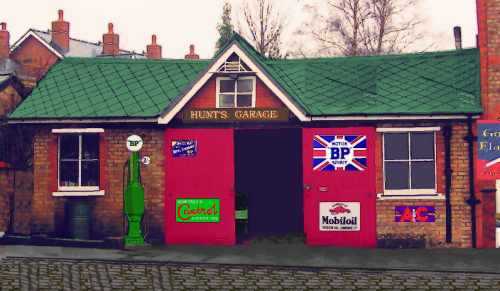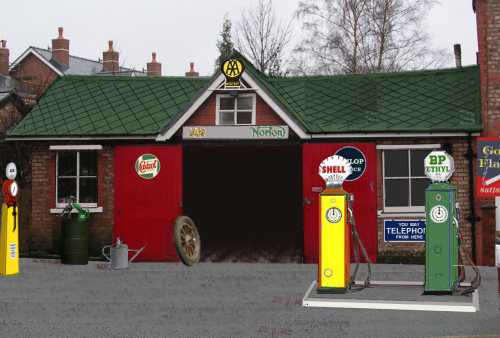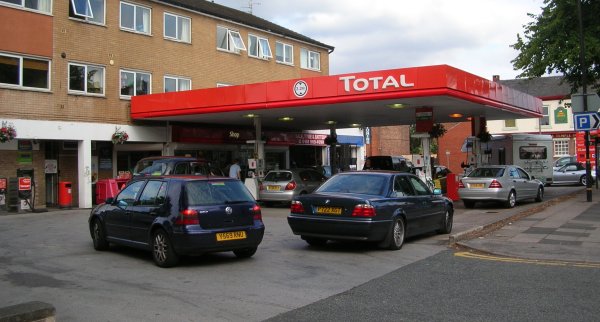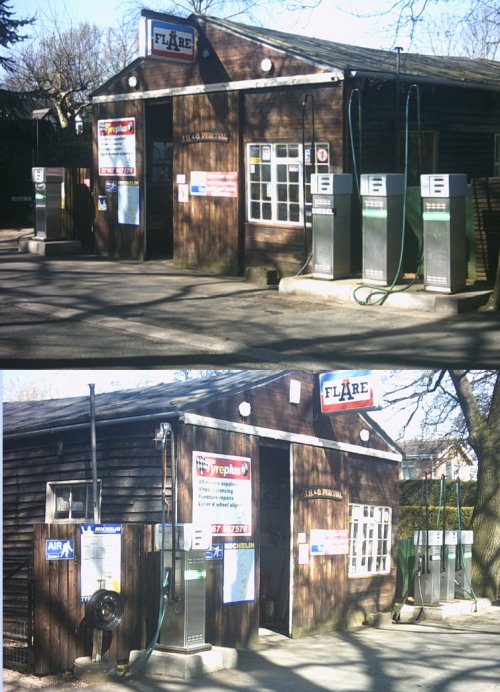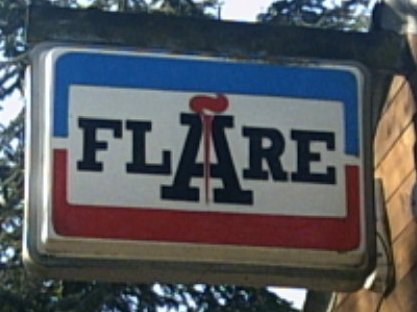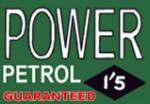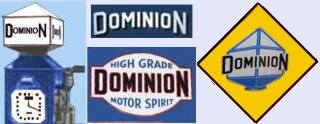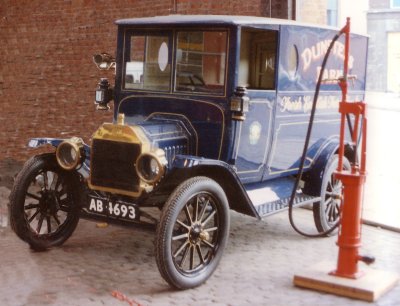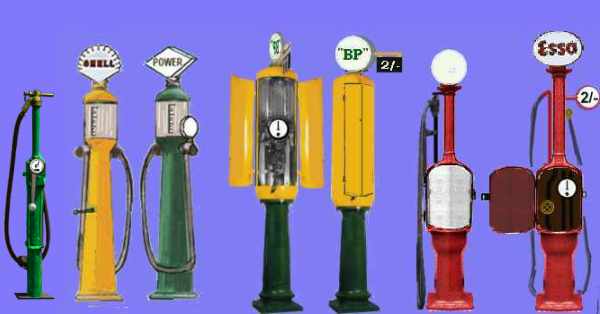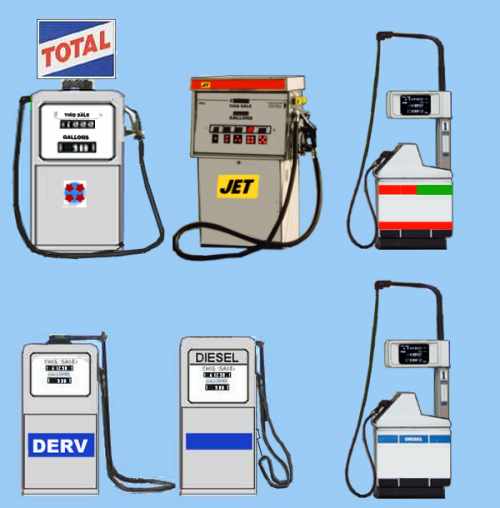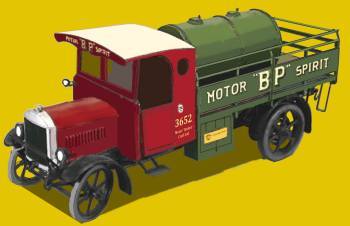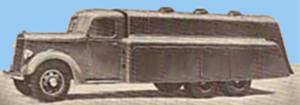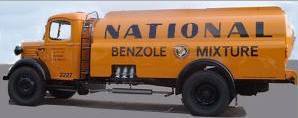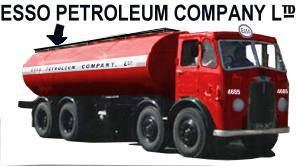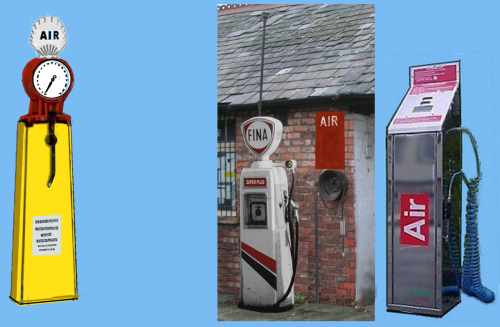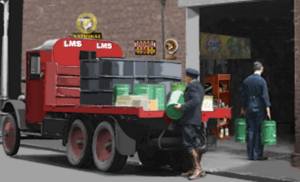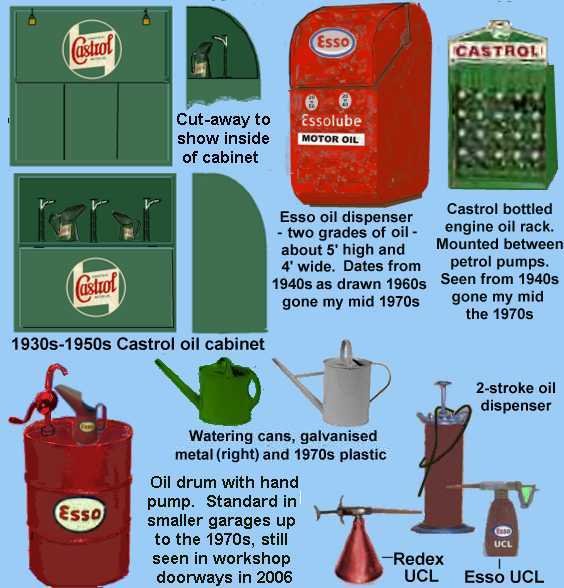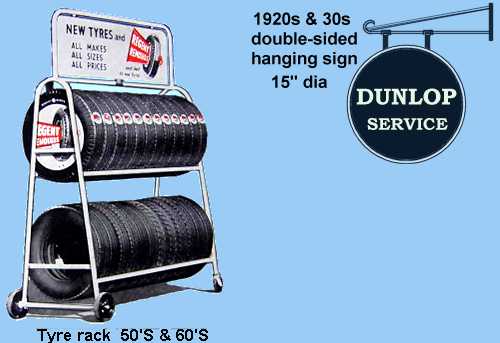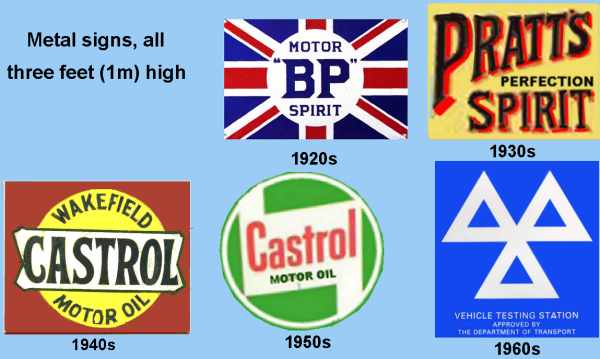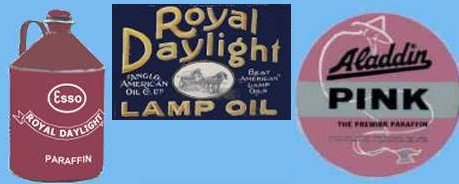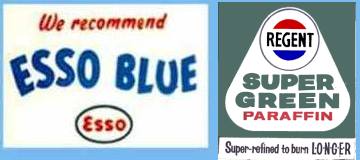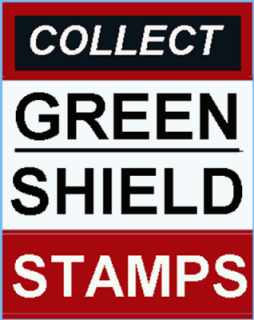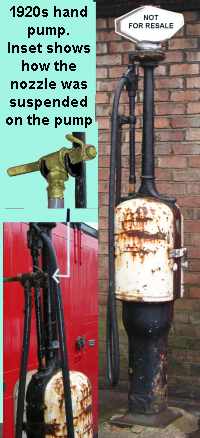
|
Also in the 1920s there was another common type of pump, a tall slender affair, still hand operated but self priming and with a meter and dial in place of the glass reservoir. These had a rectangular base supporting a cabinet of oval section with doors to either side which could be locked (the sketch below shows the pump both closed and open for business). The photo is of a pump installed in a taxi depot in the 1920s and which remained in use when the building became a funeral parlour. It is no longer used by the back-street garage which took over the building in the 1960s. The doors on the meter and pump section were sometimes painted white as shown in the photograph, when operated by an oil company owned filling station they usually had the company logo applied. There was sometimes a circular metal plate mounted high up on the pump on which the oil company logo was applied. These pumps usually had the white glass illuminated sign on the top, although some had a plain white version with no logo.
These hand operated pumps were sometimes seen outside other establishments as well, several pubs added a petrol service to attract the wealthier 'motor car people' of the day. The sketch shows the early glass container type (left), the later glass container 'cabinet' type (centre) and the tall thin type. Heights of all of these could vary and it was quite usual to have two pumps of the same type but different heights beside each other.
|

